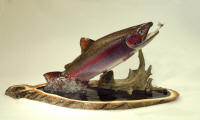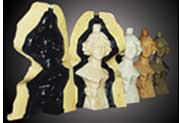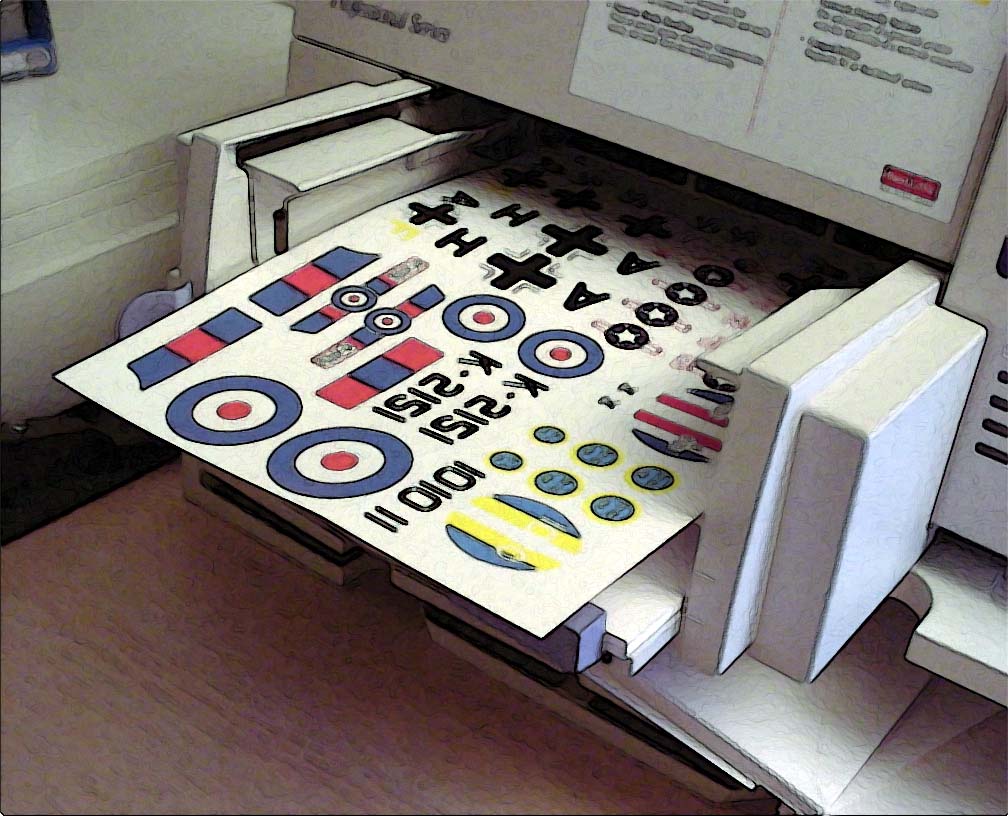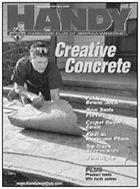 |
 |
||||||||||||||||
|
Moldmaking & Casting MaterialsPolytek produces nearly all kinds of flexible mold materials in common use, including silicone polyurethane mold materials. Flexible mold materials range from simple, one part latex (the natural product of the rubber tree), Hydrogel® N (alginate, a powder to which water is added) that is safe for contact with skin, to the higher performance two part Poly 74 or Poly 75 Series polyurethanes and TinSil® and PlatSil® Silicone mold rubbers. The two part systems are all room temperature vulcanizing (RTV). Polyurethane RTVs are the least expensive, TinSil® and PlatSil® Silicones are higher cost, perhaps twice the cost of most polyurethanes. However, silicones will out perform polyurethanes and are self-releasing. The most common and least expensive casting materials are gypsum plasters, which are available in many formulas for different end uses, and cement compositions, which are often mixed by the users. Waxes are castable, of course, but uses are limited by low hardness and high shrinkage. Low melting alloys of some metals can be cast in heat resistant silicone molds. Epoxy and Polyurethane, two part resin systems, offer tremendous versatility. Polyester resin is a common two-part casting material and is quite low in cost, especially if low cost fillers like sand, limestone or wood flour are added. Polyester resins have the disadvantage of flammability and strong odor in the liquid state and high shrinkage during cure. After studying our literature and some experimenting, you will learn the differences, advantages and disadvantages of each material. Of course, Bare-Metal will be happy to help you with your material choices. Moldmaking & Casting Methods Each molding and casting compound is unique and requires handling in a special way which may be different from other similar products. Time spent learning the special requirements of every new product and making a small test mix before using the product on a larger scale will help avoid loss of valuable time and materials. Molds are generally made by POURING the liquid rubber over a model, surrounded by a box or shell, or by BRUSHING thickened rubber onto the model and building a shell to hold the blanket mold in shape after the rubber has cured. Poured Molds Most flexible molds are poured molds. One of the simplest molds is to build a box around a model and pour on the mold material which sets to a rubber or rigid substance. More complex molds can be cut with a sharp knife from a solid block of soft mold material or poured into preconstructed shells over a model. Molds can also be poured in sections, by pouring on one surface at a time, allowing to cure, then pouring on the adjoining surface against the previous pour. Of course, molds can be poured into a shell and cut into sections as well. Poured molds are sometimes free standing if the rubber is thick enough to hold its shape, but often the box or shell is used with the mold to maintain the desired shape. Generally, the box or shell (mother mold) must be removable from the rubber mold. Poured mold materials generally pick up detail with fewer entrapped air bubbles than brushed on molds, except where bubbles on the surface of the rising liquid are trapped under a ledge such as under the chin of a head model. If this is a major problem, a brushed-on mold, or pouring one section at a time may be preferable. Permanent Shell & Model Molds for high production of many pieces are often made with a PERMANENT SHELL and MODEL. The shell and model should be made of a durable material like Poly 15-3X Casting Resin. The shell is positioned over the model on a base that locks the shell and model in position. A liquid mold rubber is poured in the space between to form a flexible mold. The shell and mold are used on the production line. When the rubber fails (as all flexible molds eventually do) the shell is simply repositioned over the model and a new mold is poured, ready for use the next day. Brush-on Molds Most pourable mold rubbers can be thickened for use to produce brush-on molds. Trying to brush-on a pourable liquid without thickening usually will not be satisfactory, because the liquid will flow off vertical surfaces. Some mold compounds such as Polygel®, and PolyLatex 60® and pre-thickened mold compounds are only suitable for brush-on molds. Brush-on molds are generally faster to make and offer the moldmaker visual control of rubber placement. Brushed-on molds generally use less mold material, as the mold is thinner than a poured mold. The shell (mother mold) is usually made over and is removable from the brushed-on mold. Care must be taken that a rigid shell does not lock onto undercuts in the brushed-on mold. All such undercuts must be eliminated or the shell must be made in multiple pieces to work around them. Flexible mother molds sometimes offer a good solution to undercuts. Shims or flanges are used to create seams or parting lines where required on brush-on molds and shells. Casting For simple solid casts, the flexible mold and shell (if required) are positioned so the opening is level and release agent, barrier coat or rinse is applied, if necessary. The casting material is poured right to the top edge, vibrated if necessary and allowed to cure. Most casts should be removed as soon as they are adequately set, as longer residence times can damage some mold materials. Use of vacuum or pressure, brushing, spraying or heated molds are all helpful techniques to eliminate bubbles and achieve perfect casts of highly detailed parts, but simple pours are often adequate. To make Poured Block Molds, No Mold Shell Your non-porous model, non-porous base board (laminate- coated sink cutout), mold box around model (non-porous sides), plasticene (to seal edges), Pol-Ease® 2300 Release Agent, a Polytek mold material of your choice, plastic mixing pail, mixing paddle, scale or measuring cups, rubber gloves, paper towels. To make Brush-On Mold with Plaster Mold Shell Your non-porous model, non-porous base board, plasticene, shim material, Polygel® 35 and/or 40, Pol-Ease® 2300 Release Agent, plastic mixing pails or paper hot cups, mixing paddle, throw- away brushes, scale or measuring cups, rubber gloves, paper towels, plaster for mold shell. To make Cold Cast Bronze Rubber mold, Pol-Ease® 2300 Release Agent, bronze powder, scale, mixing cups (paper hot cups are excellent), disposable brush, mixing sticks (tongue depressors or spatulas), very fine steel wool, oil paint (for patina). Special thanks to Polytek for providing this content. Copyright © 2001, Polytek Development Corp. All Rights Reserved. |
||||||||||||||||
| Home | Bare Metal Foil | Molding Materials | Casting Resins | Starter Kit | Decals Items | Specialty Items | |
|||||||||||||||||





